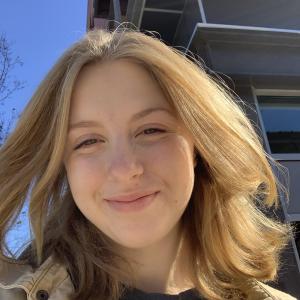Brandi recently posted an inquiry on her facebook status: "Oberfriends: If you had less than 60 seconds to express how awesome Oberlin is to someone who knows next to nothing about this place, what/how would you do it?" I visited her earlier that day, and she asked me the same question.
Now, I have the luxury on this blog of (hopefully) having more than 60 seconds to explain my love of Oberlin, but this is a good question. Having worked for admissions for the past three years, I know there are a lot of wonderful things about Oberlin. But what should we emphasize?
The short answer is that we ought to emphasize what makes Oberlin different. When looking at liberal arts colleges, the facts and figures all start to blur together after a while. All liberal arts colleges will talk about their small class sizes, outstanding relationships with professors, opportunities for undergraduate research, etc. And yes, I talk about those things, too. But there are a few things that do make us different, and I'd like to highlight some of them here.
Also, before I get any further into this, I must give credit where credit is due. The idea for this post and the way in which it is formatted comes from Tom, one of our admissions counselors (and the admissions counselor who read my application!). I like the way he presents this information, so I have borrowed it and altered it with my own information and opinions included.
What makes Oberlin different?
1. The big small school
What exactly does being "the big small school" mean? With nearly 3000 students (when combining the College of Arts and Sciences and the Conservatory of Music), Oberlin is larger than the vast majority of our peer institutions. This means a few things. We're able to offer more courses, since we have more faculty. This has inevitably led to the expansion of the curriculum, with Oberlin offering a Creative Writing major independent of the English Department. We are also able to feature several interdisciplinary programs as part of the curriculum that some other liberal arts institutions might not have: East Asian Studies, Comparative American Studies, Law and Society, Environmental Studies, Jewish Studies, and Russian and East European Studies are a few of these programs. More students, in our case, means more faculty, which inevitably leads to more course offerings. All while still maintaining the small class sizes (see, I told you I mention them) characteristic of a liberal arts education.
2. The Oberlin Conservatory of Music
Oberlin is the only place you can find a world-renowned conservatory of music and a top-ranked liberal arts college sharing the same campus. The music scene here is ridiculous. The Conservatory itself officially sponsors over 500 concerts per school year. This doesn't include impromptu performances and recitals, or any non-conservatory musical events (of which there are also a ridiculous number). Even if you don't play an instrument, if you love music, Oberlin is the place to be. I was originally a double degree applicant, as I've blogged about before, and I love the music scene here. I wouldn't give it up for anything.
3. Allen Memorial Art Museum
Though it has been closed for renovations for quite some time, the Allen Memorial Art Museum is still one of my favorite things about Oberlin. Not only is the museum itself an incredible resource (especially for those of us who love history), it is ranked as one of the top five college art museums in the country. Furthermore, art rental is pretty much the most awesome thing ever. Not too bad for a school in rural northeast Ohio, eh?
4. Sciences
Most liberal arts colleges are known for the their strong programs in the humanities and the social sciences. Oberlin is also known for its strong science programs. I could ramble on and on about the sciences and their general awesomeness, but I'll leave it to the experts. Check out the departmental websites for Biology, Neuroscience, Environmental Studies, Physics and Astronomy, Chemistry and Biochemistry, and general information about the Science Center itself!
5. The Student Body
There are so many awesome bloggers, and let me tell you, they truly are representative of the general awesomeness (totally a word...) of the Oberlin student body. Oberlin students hail from all over the country and the globe, and I've considered myself to be incredibly lucky to be given the opportunity to meet so many people with different backgrounds and interests. My favorite example of this? I got to spend an afternoon this summer trying to explain baseball to my friend Fajer, who is from Bahrain. She had never been exposed to baseball before. It was the strangest experience, trying to explain baseball. It's quite a silly sport, really. And no, there are not that many similarities to soccer, despite Fajer's attempts to draw comparisons. And Fudge, if you're reading this, I still owe you a baseball game before I graduate!
6. The Oberlin Student Cooperative Association
OSCA is the largest per-capita cooperative system at any college or university in the country. It is second in overall size only to the co-ops at UC Berkeley. I could write about OSCA, but so many other people have blogged about it, I'll just link you to their blog posts (and, yes, each word links to a different blog post).
So, let's recap. Want awesome music? Oberlin has it. Incredible academics, including the sciences? Yep, we have those! A state-of-the-art art museum (no pun intended)? One of the best in the country! Lots of awesome students, but still a smaller campus? We have that, too! Do you want the largest per-capita cooperative system of any college or university in the country? Yeah, we've got that too. Oberlin is totally awesome. I love it here.
Quote time!
"I'm going to take a picture where it looks like I'm holding up the Leaning Tower of Pisa. Do you have any idea how strong I'll look?" - Devon Banks, 30 Rock.


